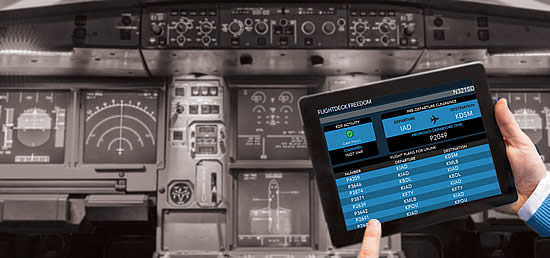 |
Connecting flight decks beyond all expectationsBy Nick Cook, Director of Flight Deck Services, Satcom Direct. |
Touchdown rituals have changed in the last five years; no longer do we reach for our luggage; instead, we reach for our cell phones as the wheels touch the tarmac.
No matter the location, the expectation is to reconnect with our digital worlds. We do not generally consider which satellite the phone connects with, which provider delivers the signal, and what the upload or download speed may be. We just want it to work; that’s what counts. Continuous connectivity is what streamlines our daily functions and operations.
At Satcom Direct, we know our aviation customers depend on secure, timely information exchanges to keep flight operations running efficiently. To facilitate this, in the same way that cell phones remain constantly connected to the service providers, we have integrated our FlightDeck Freedom, FDF, datalink communications platform with the ARINC datalink network. The integration removes limitations and enhances connectivity for flight deck communications across the globe. The aggregation ensures that FDF and ARINC users can easily access data from a single interface, making them more operationally efficient where ever their missions take them.

SD FDF is active on more than 2000 flight decks.
The SD commitment is to raise industry standards by streamlining the industry. Combining these two features delivers more flight-deck functionality, and expanded VHF coverage in several regions, including Asia. Increased integration with a broader portfolio of trip support providers is delivering even better trip planning across the globe.
The amalgamation also allows alternative access to all the advanced features offered through the Satcom Direct FDF platform. ARINC users can optimize features such as security alerts, automated notifications of hazardous weather events, and synchronization of aircraft performance with flight departments and leading industry suppliers.
The FDF datalink boosts cabin connectivity continuity and reliability by providing critical data that supports service monitoring. It is a priority for principals to keep connected, and we are committed to ensuring a consistent connectivity experience globally. Keeping customers connected, on the flight deck and in the cabin is what drives us, and this latest integration demonstrates we are delivering on our commitment.
We are always looking for opportunities to augment our offering, but more importantly for ways of adding value to the international business aviation sector. Raising industry standards is one of our objectives, and for pilots around the globe, this latest integration showcases what we do by introducing a multi-faceted portfolio of information to the flight deck via a single intuitive platform.

Today FDF supports more than 2,000 flight decks enabling smoother, safer flights and enabling voice and text flight deck communications.
Automation pushes valuable information to the crew and ground team to support real-time decision-making, which has the added benefit of reducing workload.
Pilots can modify flight plans based on information delivered through flight deck datalink services.
Built from the start on an open architecture platform, FDF allows the integration of multiple flight planning systems and other data, including engine manufacturers' health monitoring. The sum of the whole is even greater than the individual parts. With easy reconfiguration, we’re providing a simple pathway to even more information, for the operational team. This gives the flight crew the freedom to focus on flying the aircraft. Just like a cell phone, they won’t need to know what network they are using, just that they are receiving reliable data that helps them stay ahead of the operational curve.

BlueSky Business Aviation News | 10th November 2022 | Issue #677



